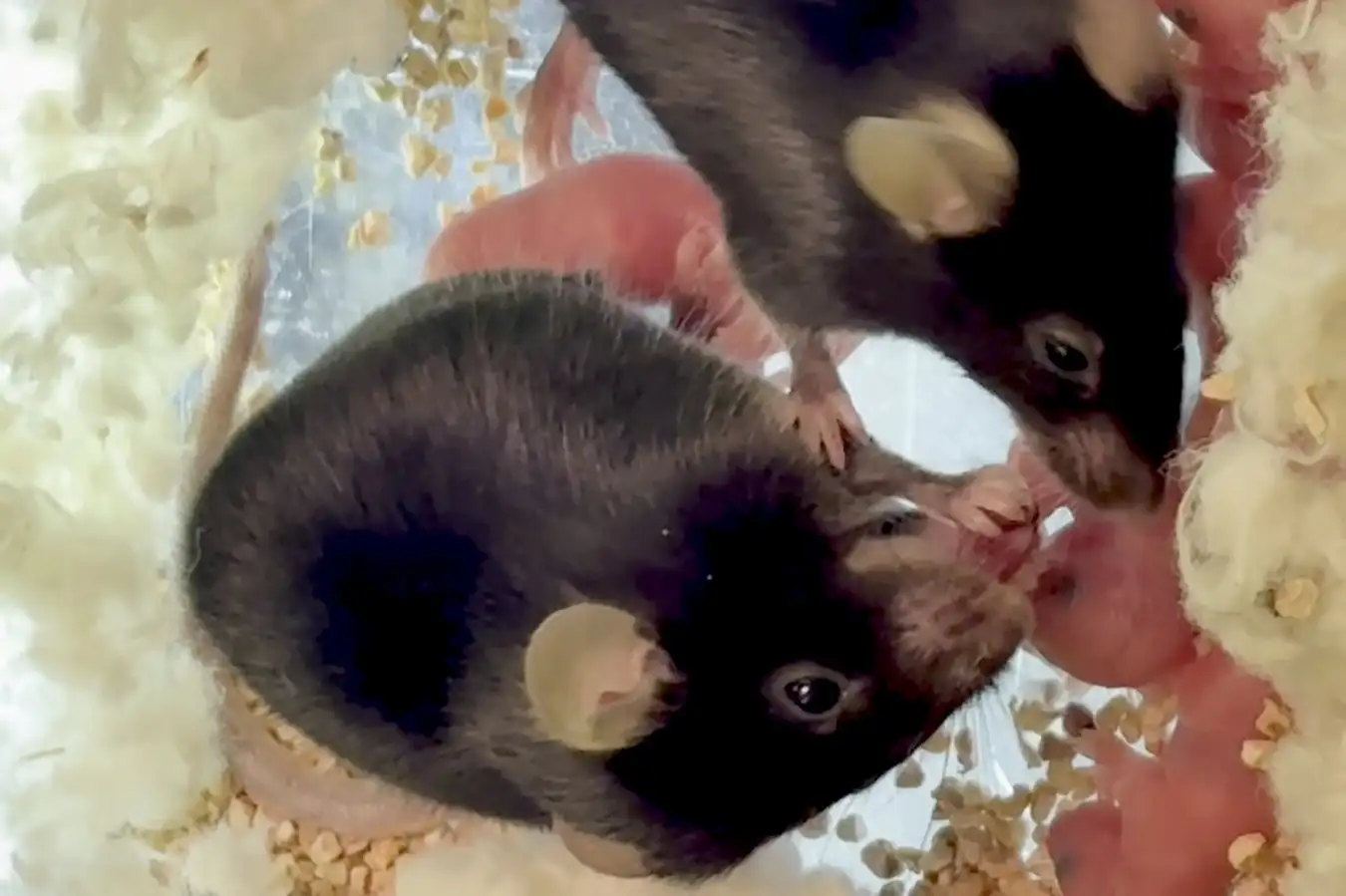
Adult mice used their paws and mouths to remove pups stuck in a pregnant female’s birth canal
Violet J. Ivan/NYU Grossman School of Medicine
Mice seem to assist pregnant females when they get into difficulty giving birth, with experienced mothers being the most helpful. This is thought to be the first official sighting of such assistance in non-primates, and so expands our knowledge of caregiving behaviours across the animal kingdom.
Humans are the only animal known to aid one another consistently during birth, which is a particularly lengthy and painful process in humans because our babies have large heads and must travel down a relatively narrow birth canal. Other primates, such as black snub-nosed monkeys and bonobos, have also been seen helping one another give birth, but only occasionally.
Now, researchers have observed the same behaviour in mice. Robert Froemke at NYU Langone Health in New York City and his colleagues spotted it while recording the brain activity of mice that were giving birth as part of a separate study. They found that other mice in the same cage interacted with these animals, and it seemed that they were sometimes assisting with pup delivery.
To learn more, the researchers genetically engineered pregnant mice to lack oxytocin receptors. Oxytocin, often called the “love hormone”, induces uterine contractions that help to push mouse pups out of the birth canal. Without these contractions, they are likely to get stuck and die. The mother often won’t survive either.
The researchers housed 10 of these mice in individual cages, pairing each one with a female mouse that had previously given birth to at least one litter. A separate group of seven pregnant mice without oxytocin receptors were kept in individual cages by themselves.
During labour, the mouse mothers assisted the pregnant mice when their pups became stuck. “She will come over and act like a little mouse midwife and very carefully, with her mouth and with her paws, pull the pup out,” says Froemke, who presented the findings at a meeting of the Society for Neuroscience in San Diego, California. The assisting mice also broke open the fluid-filled sac encasing the newborns, allowing them to breathe.
Nine of the 10 pregnant mice that were paired with these mouse “midwives” survived labour, and about 90 per cent of their litters did too, on average. In comparison, only one of the solitary pregnant mice survived giving birth, and all of the pups in this group died. “There are a lot of reasons mammals are social, and a primary reason is to help each other out, especially in these really vulnerable periods,” says Froemke. “Even mice struggle with childbirth and childcare, like we do, and can help others out so it isn’t so traumatic, maybe kind of like we do.”
To assess whether the presence of a mouse who had previously given birth was required, the team placed another 14 pregnant mice without oxytocin receptors in separate cages. Seven of them were paired with male mice, four with female mice who had never given birth and three with female mice that hadn’t all given birth but did also lack oxytocin receptors. In addition to their role in uterine contraction, these receptors are thought to be important for social interactions.
Survival rates generally improved when other mice lent a helping hand
Violet J. Ivan/NYU Grossman School of Medicine
The researchers found that nearly 60 per cent of pregnant mice housed with male mice and half of those housed with non-mother females survived labour. But these animals didn’t pull the pups out during delivery. Instead, the males mounted the pregnant female, which placed pressure on her back, helping to push the pups out. Meanwhile, the non-mother females groomed pregnant females and similarly applied abdominal pressure. It is unclear why there is a difference in approach between the groups. Among the three mice kept with females that lacked oxytocin receptors, only one survived.
None of the pups in this part of the experiment survived, however, as their fluid-filled sacs were left intact. “It seems that the experience of being a mother is required to be a successful [mouse] midwife,” says Froemke.
The findings support the idea that caregiving is more common in the animal kingdom than we thought. For instance, mice have been seen giving a form of first aid to their unconcious companions. The latest results suggest that birth and rearing young are “central organising forces in animals’ relations and social networks”, says Froemke.
“Parental care is one of the most influential social interactions,” says Bianca Jones Marlin at Columbia University in New York. These results emphasise that it “requires support”.
Froemke suspects midwife-like behaviors occur among wild mice, and possibly among other rodents and animals in general. “Giving birth is the most vulnerable time in an animal’s life,” he says. “Animals secrete away so as not to be found by predators, which I think is why field observers have rarely seen this in any species other than humans.”
Topics:
- pregnancy and birth/
- animal behaviour
Source link : https://www.newscientist.com/article/2504554-mouse-midwives-help-their-pregnant-companions-give-birth/?utm_campaign=RSS%7CNSNS&utm_source=NSNS&utm_medium=RSS&utm_content=home
Author :
Publish date : 2025-11-20 14:00:00
Copyright for syndicated content belongs to the linked Source.